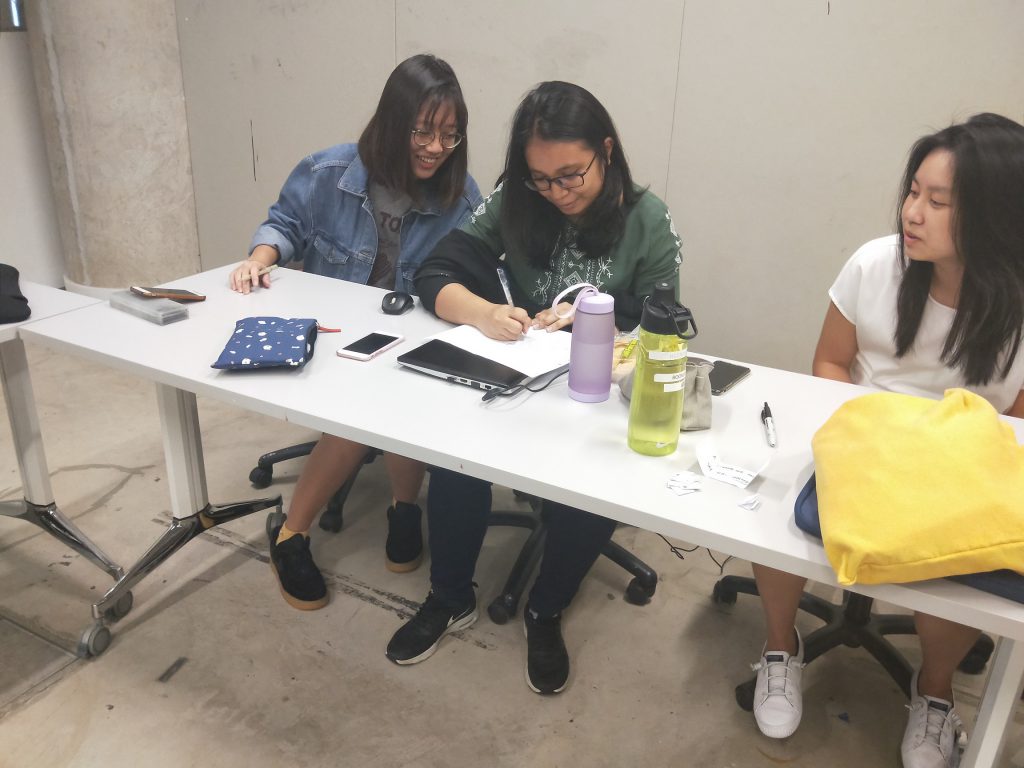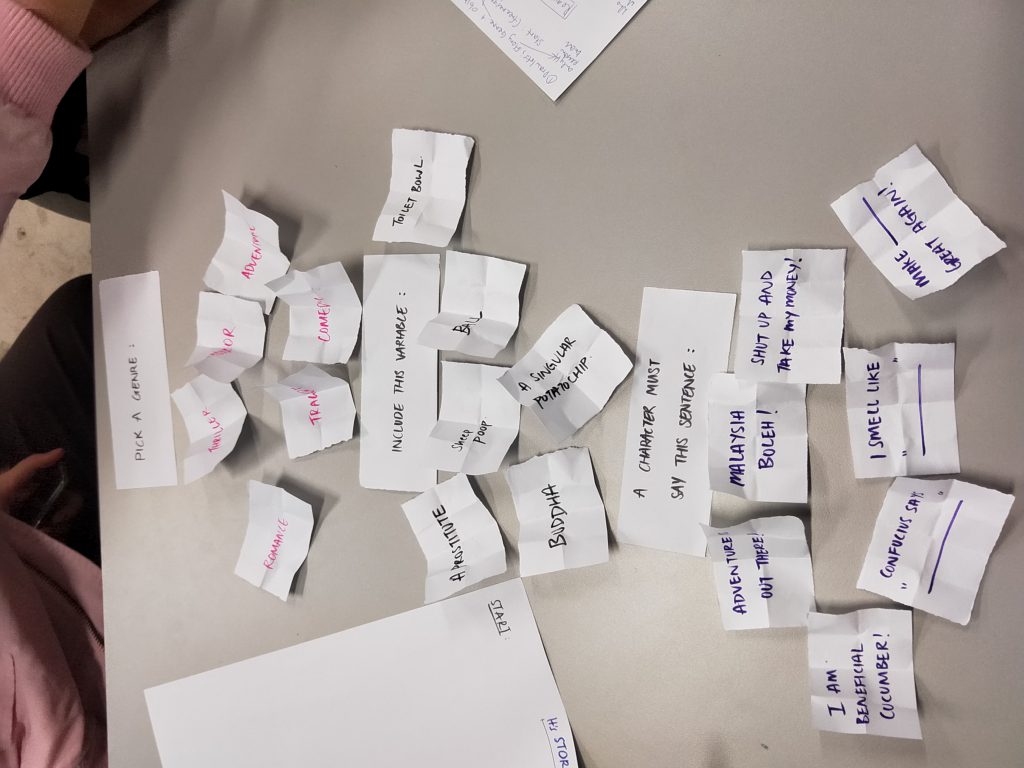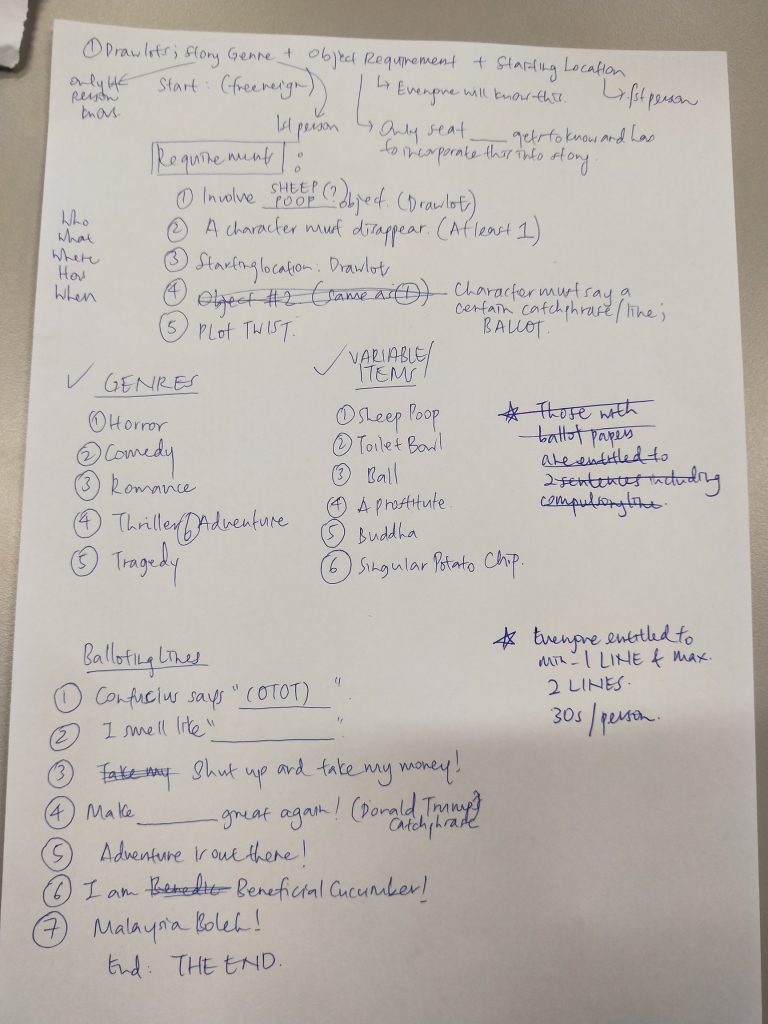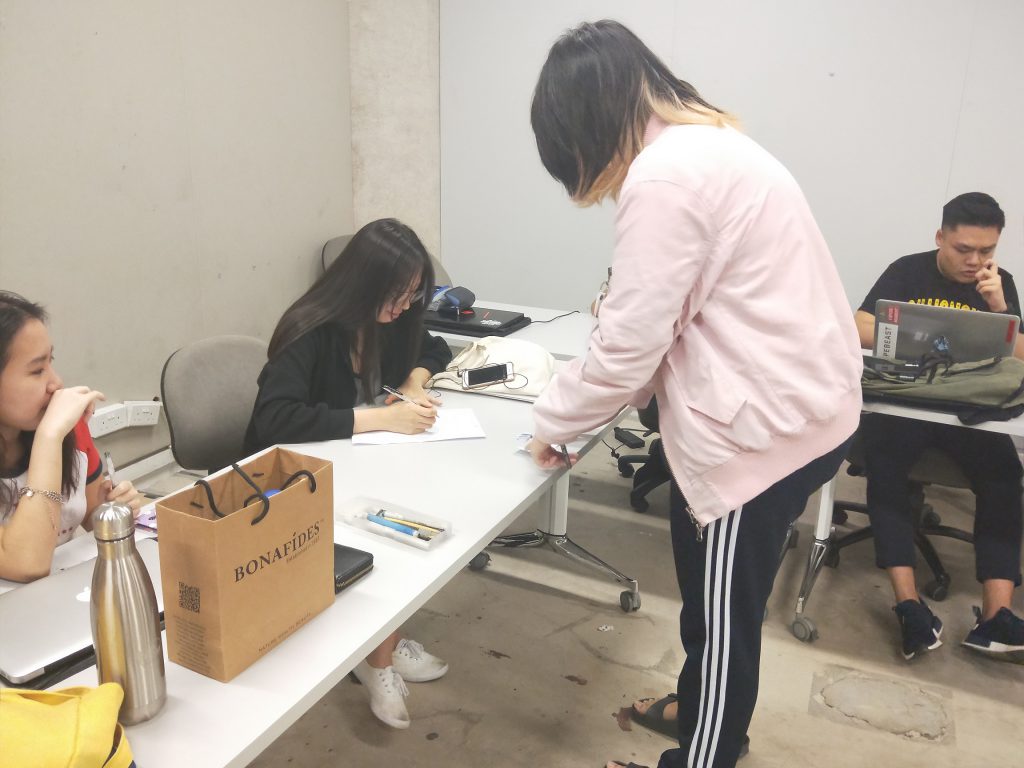MICRO-PROJECT 2: It’s Storytime!
Members: Celine, Nok Wan, Naomi, Joey
In our game, everyone sits beside each other and write a story together. Everyone is only given one or two lines to write within 30 seconds before they must pass the story on. Three people will also have to ballot a genre, a variable and a catchphrase to include in the story. There must be a plot twist and a character must disappear. After the story has been finished by everyone, it becomes an art piece.
The viewer of this textual art must contribute their interpretation of the story and creativity to complete the story. The artist is only present to provide the boundaries and limitations to guide the story along. It involves social interaction because a co-creator must view other co-creator’s responses to the artwork and how they interpret it before they can build onto it. Essentially, it becomes a collective artwork where artists share different thinking to succeed a shared aim.
At different points of time, people’s perspectives and way of thinking may change, which can affect the flow of the story based on their mood. Also, when people from faraway and different places come together to write the story, it can introduce different elements that we might not have thought of due to the difference in how people are raised in their respective environments.
Our D.I.W.O artwork is a departure from traditional art because instead of how an artwork is pre-planned and personal, our collective artwork provides a collaborative platform which evokes a sense of unpredictability and unplanned creativity. Adding obstacles and requirements also serves to raise its levels and to make it more challenging and controlled to establish a common goal.
I believe that through D.I.W.O, artists can bond together through social media and collaborations with communities. It also helps people to ‘connect people with other cultures, outside of their own nation states…ideologies.’, as stated by Marc Garrett. This is a departure from traditional artists because they must suffer to maintain a stable finance, threatened by ill-informed perspectives and a rigid infrastructural tie and framework.
Our crowd-sourced time-based artwork is different from the other artworks shown because it incorporates text as a form of art. Also, it is passive, and there are hidden elements that certain co-workers would not know about. This inspires more creativity and difference in portraying the result of the artwork because of how everyone thinks differently.
However, it is also similar to Yoko Ono’s Cut Piece. Each viewer must contribute their part, based on what the others before them has already done. There is a line where you must wait for your turn, and the art piece will not be as effective should everyone contribute simultaneously. The viewers are in full control and are placed in the artist’s shoes. A good comparison would also be the Human Clock, where viewers submit their own image to capture that moment of time. The beauty of the art work is in how a single person’s actions is now obvious and significant in creating the artwork.




